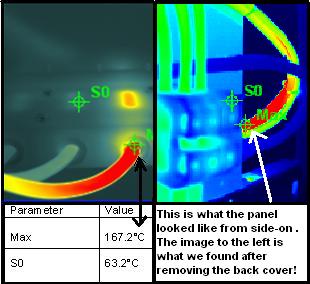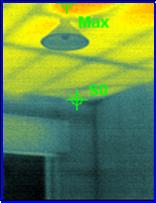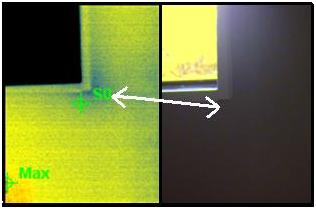Moisture or leaks infiltrating your wall frame studs can cause problems, regardless if the timber is treated or not.
One of the most common questions I get asked when someone calls me for a pre purchase thermal leak inspection, is “Should I worry about getting a leak/moisture test because the timber is treated?”. YES!
For example: Lets say the home is only 4 years old (Built to the new building code… treated timber on external framing), and there was a window joinery failure from day 1. If the window has been getting hit by wind driven rain on a regular basis, then ‘gradual leak damage’ could occur on the timber framing if the water didn’t get out through the cavity. The same scenario would apply for pre 1992 built homes… in fact, the timber framing will rot no matter when the place was built if enough water gets to it.
Here’s an infrared thermal imaging leak photo of a wet wall stud in a home with treated timber…
Locating a leak in one section of a wall can be simple with the right leak detection equipment. If you have any doubt at all in the home you are buying… get it checked for leaks, because the home owner may have fixed the source of the leak, but not the damage it caused along the way.
The benefit of our thermal imaging camera, is that ‘tricky’ vendors who paint over walls and ceilings in an attempt to hide leak marks will get caught out, because if there is moisture on the gib at the time of inspection, no paint will hide it, as it will be a different temperature… which is exactly what our infrared camera will detect and locate.









